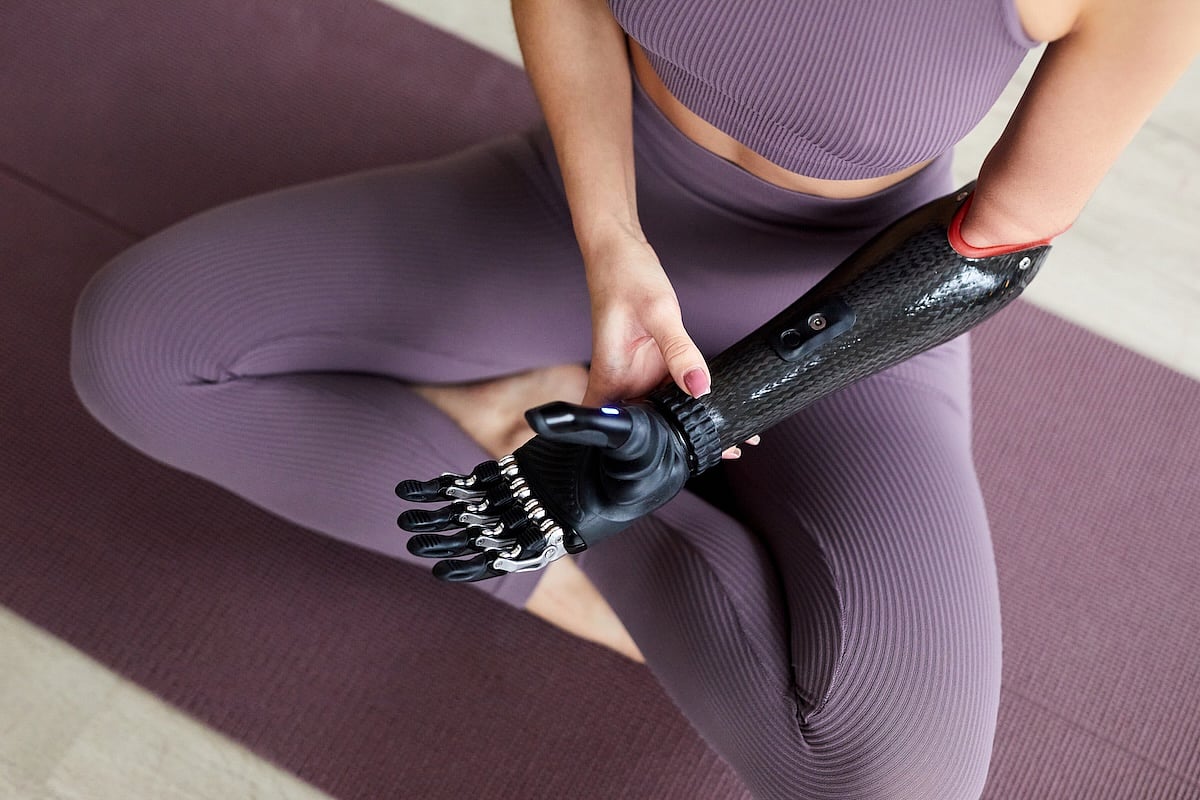to minimize exposure to our patients, especially those who are most susceptible to the virus.
Click here for updates on how we are serving our patients.
1115 South Ave West, Westfield, NJ 07090
(908) 233-2200 - (908) 233-3975 Vaccine Appointment Portal
Get Healthy!

- Posted August 25, 2025
Brain Map Explains Phantom Limb Pain, Hints At Improved Prosthetics
“Phantom limb” pain has been a curious aftereffect of amputation, with people experiencing false sensations from a hand, arm or leg that is no longer there.
Researchers now think they know why phantom limb sensations occur.
It turns out that the brain maintains a “map” of the body that remains unchanged even after a limb has been amputated, researchers report in the journal Nature Neuroscience.
This not only explains a well-documented phenomenon, but offers a new solution when it comes to artificial limbs, researchers say.
Using this brain map, it might be more straightforward than previously thought to control a robotic replacement limb with the mind, researchers said.
“Now that we’ve shown these maps are stable, brain-computer interface technologies can operate under the assumption that the body map remains consistent over time,” lead researcher Hunter Schone, a postdoctoral associate with the University of Pittsburgh, said in a news release.
“This allows us to move into the next frontier: accessing finer details of the hand map — like distinguishing the tip of the finger from the base — and restoring the rich, qualitative aspects of sensation, such as texture, shape and temperature,” he continued. “This study is a powerful reminder that even after limb loss, the brain holds onto the body, waiting for us to reconnect.”
For this study, researchers worked with three people who needed to have a hand amputated for medical reasons — one for blood vessel problems, one for cancer, and one for a syndrome that increases risk of bone fractures.
Prior research had shown that an area of the brain called the somatosensory cortex holds a map of the body, with different regions corresponding to different body parts.
This map is responsible for processing sensory information, like touching something hot, pressing down on an object or stubbing a toe, researchers said.
For decades, neuroscientists have commonly thought that after an amputation, the map rearranges itself and takes over the part previously assigned to the now-missing limb.
But this can’t explain the phantom limb phenomenon, researchers said. In addition, brain imaging studies have shown that amputees display brain patterns resembling those of able-bodied folks when asked to “move” their missing fingers.
Prior to amputation, all three study participants underwent functional MRI scans.
During the MRI scans, they were asked to move each of their hand’s five digits and to purse their lips, enabling researchers to construct brain maps tied to their soon-to-be-gone hand.
In the brain, the region linked to the lips sits near that of the hand, enabling researchers to see whether that region would take over the part of the map now assigned to the hand.
The participants then returned to the lab three months and six months after amputation to repeat the process. One was scanned again a year and a half after amputation, and another five years after.
Analysis revealed a remarkable consistency — even with a hand missing, the corresponding brain region activated in an almost identical manner.
“Because of our previous work, we suspected that the brain maps would be largely unchanged, but the extent to which the map of the missing limb remained intact was jaw-dropping,” senior researcher Tamar Makin said in a news release.
“Bearing in mind that the somatosensory cortex is responsible for interpreting what’s going on within the body, it seems astonishing that it doesn’t seem to know that the hand is no longer there,” said Makin, a professor of cognitive neuroscience at the University of Cambridge.
Results also showed that the region assigned to the lips remained unchanged, and had not taken over the region representing the missing hand.
“We didn’t see any signs of the reorganization that is supposed to happen according to the classical way of thinking,” Schone said. “The brain maps remained static and unchanged.”
To verify their findings, researchers compared the three case studies to 26 people who’d had their upper limbs amputated nearly 24 years earlier. Those folks showed similar brain maps of the hand and lips, suggesting that these maps remain stable long after amputation.
Phantom limb pain occurs because the remaining nerves no longer connect a hand, arm or leg to the brain map, Schone said. Without that end target, the nerves send noise to the brain that is misinterpreted as a phantom limb.
“The most promising therapies involve rethinking how the amputation surgery is actually performed, for instance grafting the nerves into a new muscle or skin, so they have a new home to attach to,” Schone said.
One of the three participants received a complex amputation that involved grafting the residual nerves to new muscle or skin, and she no longer experiences a phantom limb, researchers said.
The other two received a standard amputation and continue to have sensations from their phantom hand, researchers noted.
The results also suggest that robotic replacement limbs should work if they are connected to the associated brain receptors through the nerves that remain in the residual limb, said researcher Chris Baker of the Laboratory of Brain & Cognition at the National Institutes of Mental Health in Bethesda, Md.
“If the brain rewired itself after amputation, these technologies would fail. If the area that had been responsible for controlling your hand was now responsible for your face, these implants just wouldn’t work,” he said in a news release. “Our findings provide a real opportunity to develop these technologies now.”
More information
The University of Texas MD Anderson Cancer Center has more on phantom limb pain.
SOURCES: University of Cambridge, news release, Aug. 21, 2025, Nature Neuroscience, Aug. 21, 2025








